How to Control Wild Carrot (Queen Anne’s lace)
All about this familiar lacy plant seen blooming in sunny meadows, roadsides, and backyards in summer.
Some plants are weed-world superstars because they can seed rampantly far and wide. Others are weaker in the spread department, but once they find a new home, they’re difficult to eradicate.
Goutweed falls into that second category. Although it’s not as common or well-traveled of a weed as dandelions, chickweed, and crabgrass, it’s one of the most stubborn to give up.
The irony is that this is a weed that often finds its way into a new garden because the gardener introduced it – or at least a jazzier parent of it.
Goutweed often gains a foothold when shoots of a once-popular groundcover called variegated bishop’s weed (and sometimes “snow on the mountain”) revert to a green-leaf form that’s even more aggressive than the variegated parent.
Once that happens, colonies of dense, green goutweed go into overdrive, overtaking most anything in its path via shallow, underground stems called rhizomes.
Thanks to the plant’s ability to send up new shoots from even small rhizome pieces left behind from attempted pulling and digging, it’s a weed that often takes repeated, tenacious efforts to conquer.
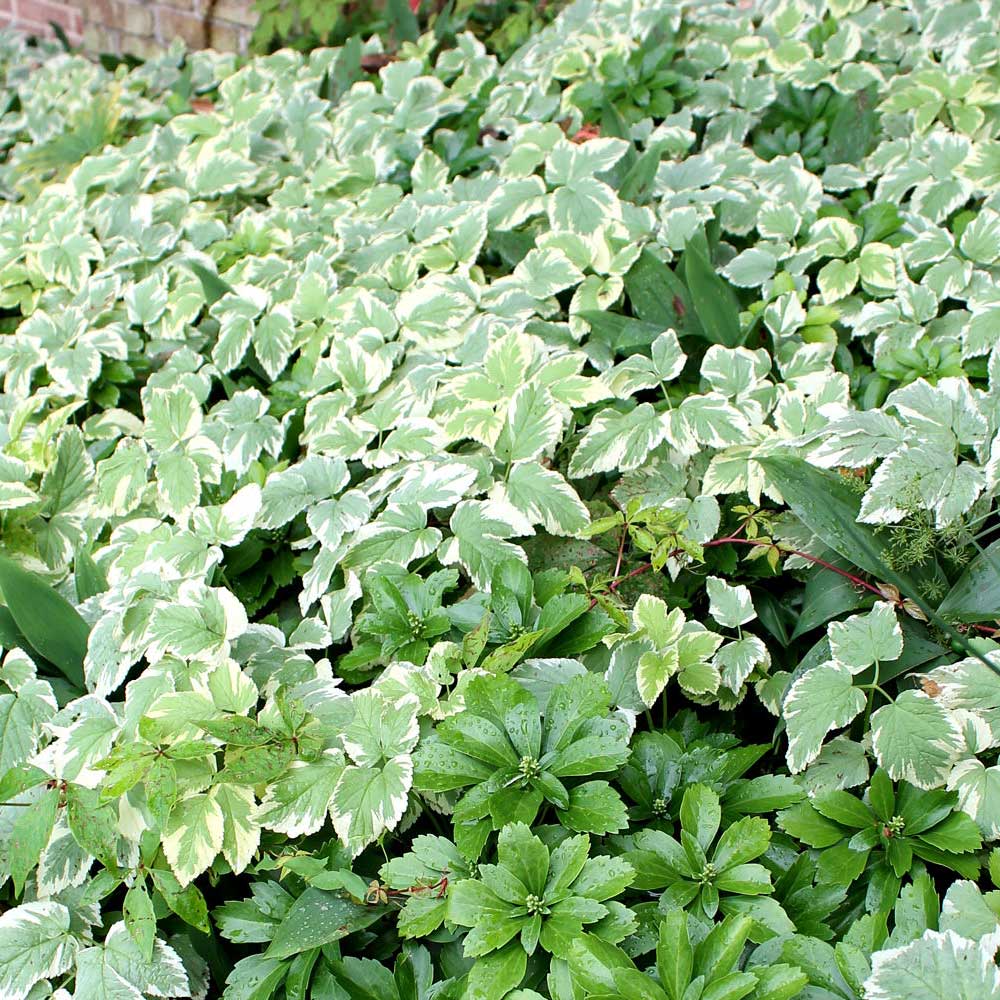
This is the variegated form of goutweed, known as variegated bishop's weed, that’s planted as a groundcover. George Weigel
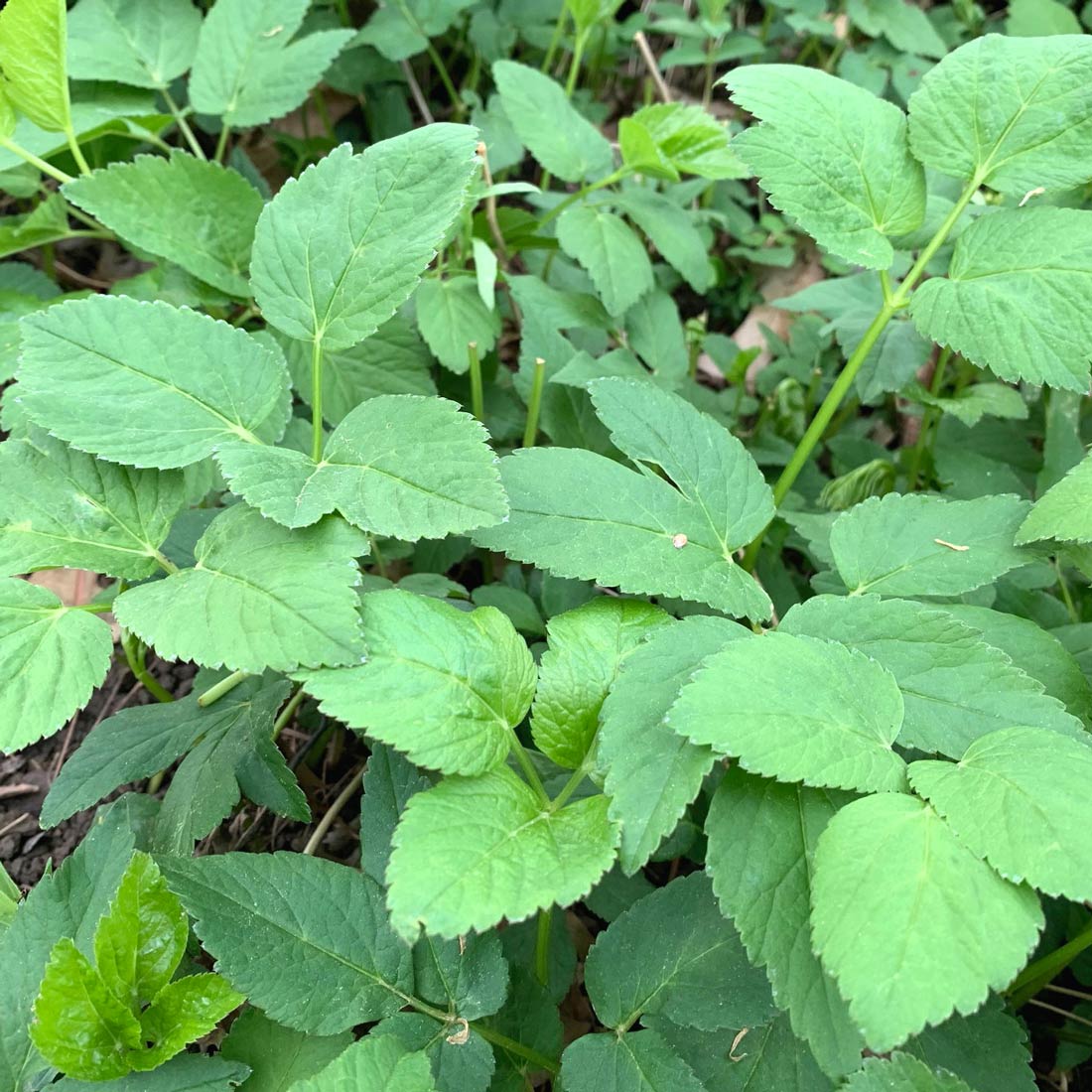
This colony of goutweed has formed a dense, foot-tall mat. George Weigel
Goutweed and variegated bishop’s weed are the same plant – Aegopodium podagraria in botanical terms. The white-edged version of it was attractive enough and vigorous enough to become an ornamental groundcover sold in garden centers. It was often recommended as a good choice for planting under shade trees because of its talent for growing in shade and tree-root competition, plus its deer-resistance.
Gardeners often share divisions with other gardeners.
But over time, colonies often begin producing green leaves that go from “vigorous” to “invasive.” This wilder form is what’s more often called goutweed and occasionally ground elder.
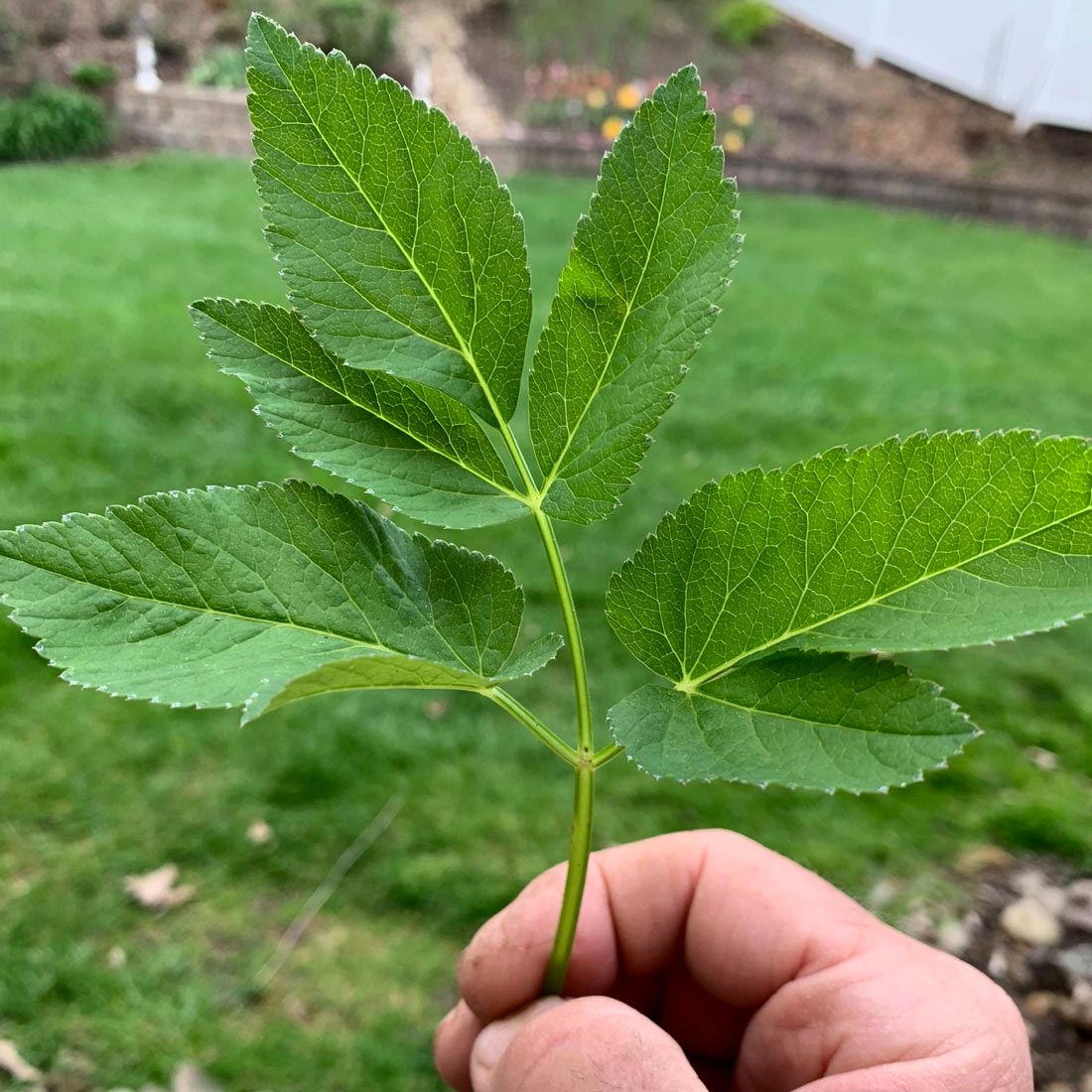
Goutweed leaves come to a point and grow in three-leaf arrangements at the stem tips. George Weigel
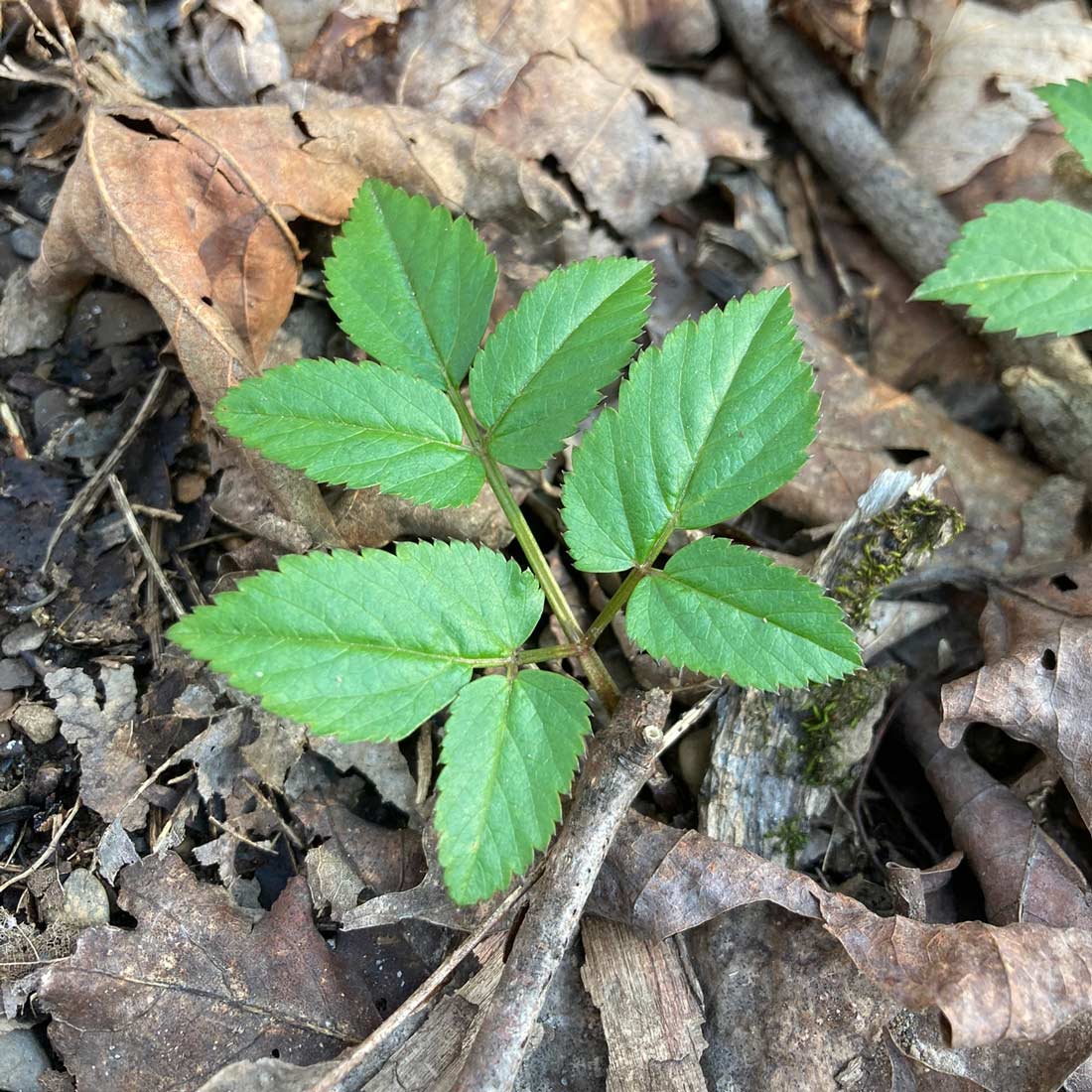
Goutweed seedling. iNaturalist
Goutweed grows about a foot tall and has medium-green oval leaves that come to a point (“ovate”) and form in groups of three at the stem tips. The stems are hollow, and the leaves alternate up the stems.
Goutweed is a cold-hardy perennial that dies to the ground in winter, then regrows and colonizes with a vengeance the following spring.
Although plants are durable enough to thrive in a variety of settings, goutweed prefers damp soil and fairly shaded conditions. That’s why in nature you’ll usually find it growing in the dappled light of woodlands, along shady creek banks, in wetlands, and in roadside ditches.
However, it’ll also grow in pastures, untended lots, and of course, garden beds – usually in or near where variegated bishop’s weed was planted. (That name comes from past plant-admirers who thought the leaves looked like the pointed hats of Catholic bishops. The goutweed name comes from fact that the plant has been used as a treatment for gout.)
Goutweed is most common in the eastern and northern U.S., as far south as South Carolina, north into Canada, and in parts of the Pacific Northwest.
As a carrot-family plant, goutweed produces white umbrella-shaped flower clusters in late spring. Although plants can spread by seed that follows these flowers, goutweed isn’t a prolific spreader by that method. It relies far more on those spreading rhizomes, which can reach out eight feet or more from a parent plant.
Because goutweed is so good at resprouting, digging and pulling can make an infestation worse – unless you’re careful to remove every last rhizome piece and are quick to head off comeback attempts. Expect to invest in multiple digs, pulls, and/or cuts.
Another non-chemical option in the case of goutweed colonies is covering patches of it with black plastic for at least several months. That can smother and kill it.
Otherwise, Extension services usually recommend spraying goutweed leaves with a non-selective herbicide which moves into the roots and kills whole plants. You may need more than one application.
Herbicides are most effective when used in the fall. That’s when perennial weeds such as goutweed are attempting to store leaf-generated carbohydrates in the roots and will carry the herbicide along for the ride.
Just be careful not to let herbicide sprays drift onto nearby plants. And always read product labels for application details and safe-use instructions.
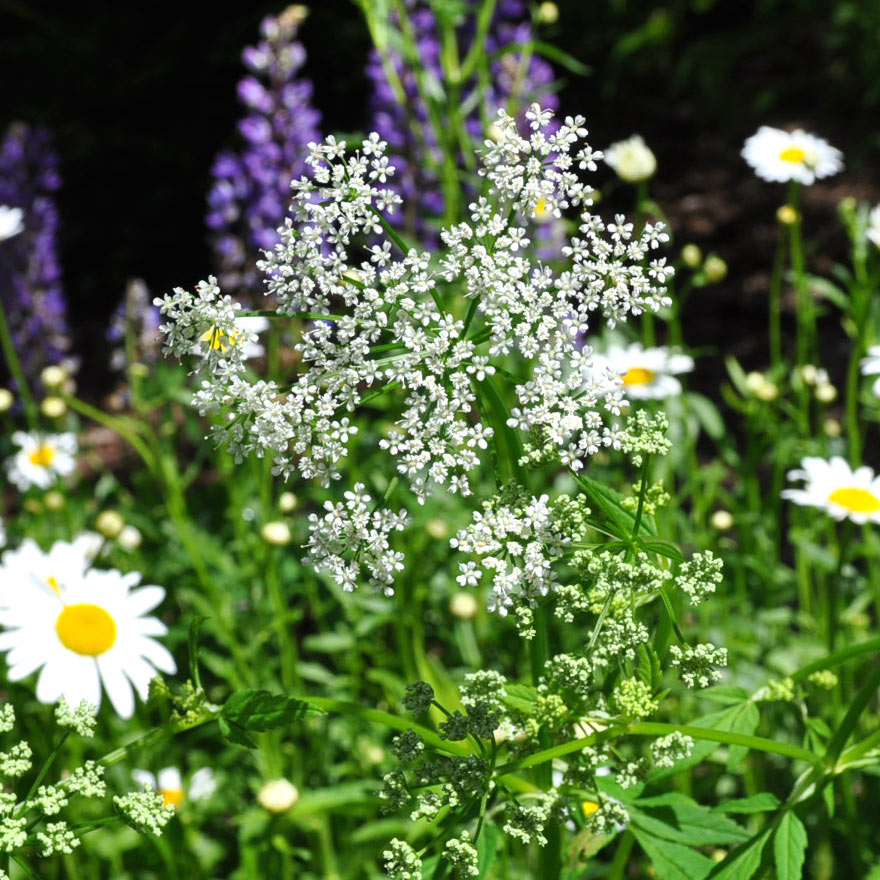
These white flower stalks on variegated bishop’s weed can lead to seeds that produce green-leafed offspring. George Weigel
Covering the ground with mulch or dense plantings of desirable plants is a way to keep goutweed from finding a new home.
If you have a planting of variegated bishop’s weed, either remove it or watch it carefully to cull out any shoots that are reverting to green and any flower stalks.
Your best bet at preventing goutweed is to avoid buying variegated bishop’s weed in the first place and to not plant divisions offered by other gardeners.